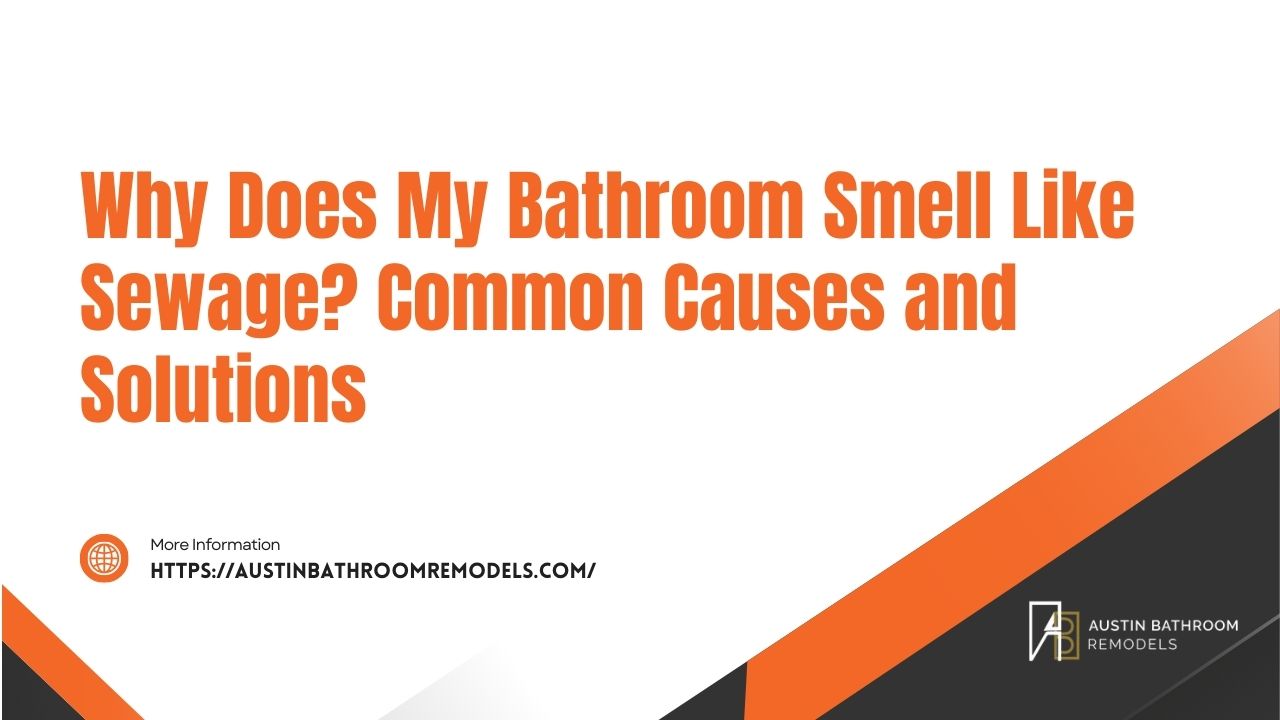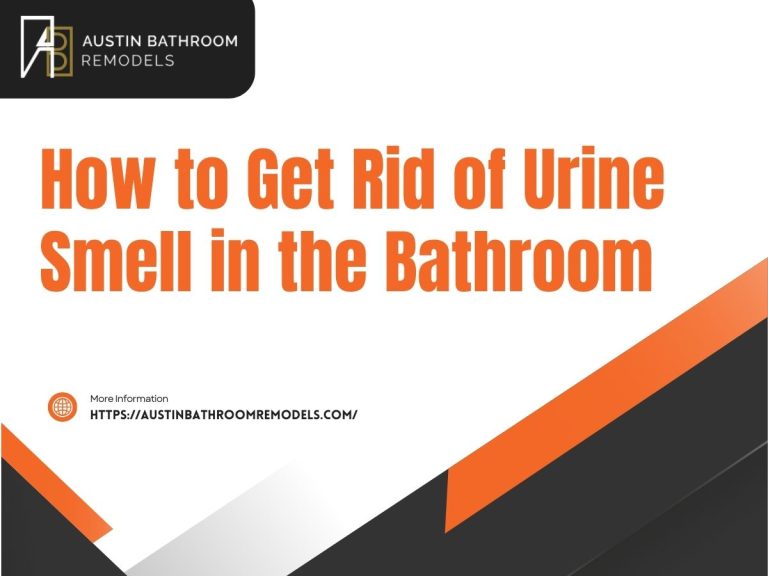Why Does My Bathroom Smell Like Sewage? Common Causes and Solutions
Nothing ruins a peaceful bathroom visit quite like the unmistakable stench of sewage wafting through the air. If you’ve been asking yourself, “Why does my bathroom smell like sewage?” you’re not alone. This unpleasant odor is more common than you might think, and the good news is that most causes have straightforward solutions.
Sewer gas odor in your bathroom isn’t just unpleasant—it can signal underlying plumbing issues that need attention. In this comprehensive guide, we’ll explore the most common reasons your bathroom smells like sewage, provide practical solutions for each problem, and share preventive measures to keep your bathroom fresh and odor-free.
Understanding Sewer Gas and Why It’s Problematic
Before diving into specific causes, it’s important to understand what creates that sewage smell. Sewer gas is a mixture of gases produced by decomposing waste in your plumbing system. This cocktail typically contains hydrogen sulfide (the source of that rotten egg smell), methane, ammonia, and other compounds.
Beyond being unpleasant, sewer gas can pose health risks. Prolonged exposure may cause headaches, dizziness, and respiratory irritation. In rare cases with poor ventilation, high concentrations can be dangerous. This is why addressing bathroom sewage smells promptly is crucial for both comfort and safety.
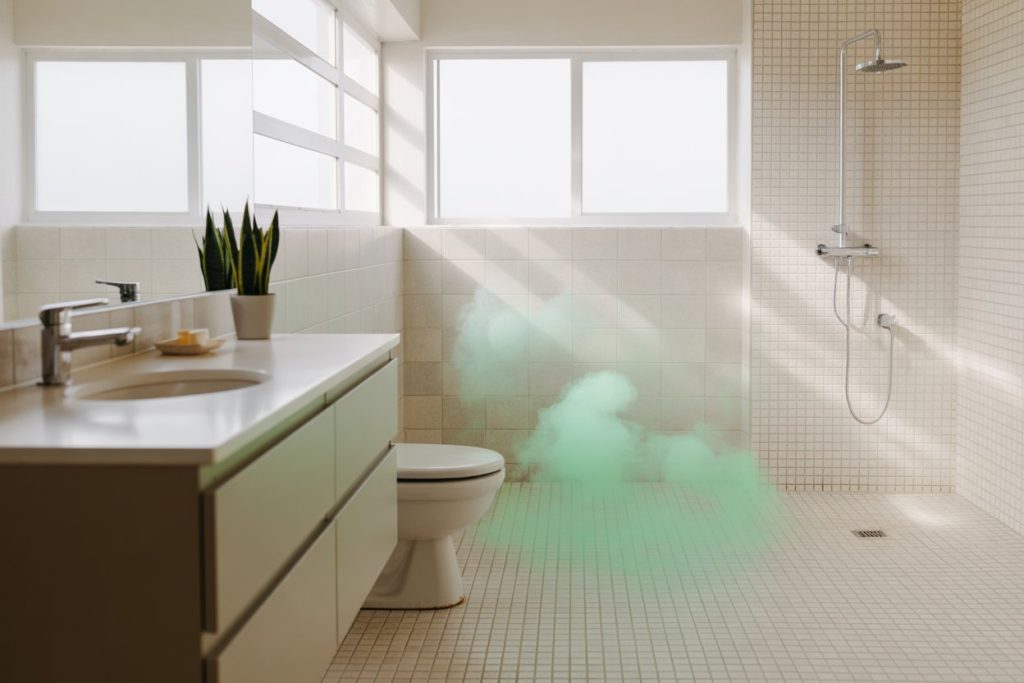
Common Causes of Sewage Smell in Bathrooms
Dry P-Trap: The Most Common Culprit
The P-trap is a curved section of pipe beneath your sink, shower, or floor drain that holds water to create a seal against sewer gases. When this water barrier evaporates, sewer gas can escape into your bathroom.
Why P-traps dry out:
- Infrequent use of fixtures
- Hot, dry weather accelerating evaporation
- Leaks in the trap itself
- Improper installation
Solution: Run water in all bathroom fixtures for 30 seconds to refill the P-trap. For rarely used guest bathrooms, make this a monthly routine. If the smell persists after refilling, inspect the P-trap for cracks or loose connections that might need repair.
Clogged or Partially Blocked Drains
Hair, soap scum, and debris can accumulate in drains, creating partial blockages that allow sewer gas to escape while preventing proper water flow. These clogs also harbor bacteria that contribute to foul odors.
Signs of drain blockages:
- Slow-draining water
- Gurgling sounds
- Water backing up
- Persistent sewage smell
Solution: Start with natural cleaning methods. Pour a mixture of baking soda and white vinegar down the drain, followed by hot water after 30 minutes. For stubborn clogs, use a drain snake or plunger designed for sinks and showers. Avoid harsh chemical cleaners that can damage pipes and harm the environment.
Vent Pipe Problems
Your plumbing system relies on vent pipes to regulate air pressure and allow gases to escape safely outside your home. When these vents become blocked or damaged, sewer gas can back up into your bathroom.
Common vent pipe issues:
- Debris or bird nests blocking roof vents
- Damaged or disconnected vent pipes
- Ice formation in cold climates
- Improper vent sizing or installation
Solution: Check roof vents for visible obstructions and clear them carefully. For internal vent problems or if you’re uncomfortable working on your roof, contact a professional plumber. Vent pipe repairs often require specialized knowledge and tools.
Faulty Wax Ring Around the Toilet
The wax ring creates a watertight seal between your toilet and the floor drain. When this ring deteriorates or shifts, it can allow sewer gas to seep into your bathroom around the toilet base.
Signs of wax ring failure:
- Sewage smell strongest near the toilet
- Water pooling around the toilet base
- Toilet feels loose or rocks when used
- Stains on the floor around the toilet
Solution: Replacing a wax ring requires removing the toilet, which can be challenging for beginners. If you’re comfortable with DIY plumbing, ensure you have the right size wax ring and follow installation instructions carefully. Otherwise, hire a professional to avoid potential water damage from improper installation.
Damaged or Missing Caulk
The caulk around your bathtub, shower, and toilet base prevents water from seeping behind fixtures. When caulk deteriorates, water can penetrate these areas, creating conditions for bacterial growth and allowing sewer gas to escape.
Solution: Remove old, damaged caulk with a caulk removal tool, clean the area thoroughly, and apply fresh, high-quality bathroom caulk. Choose mold-resistant formulations and ensure proper ventilation while curing.
Issues with Floor Drains
Many bathrooms, especially in basements or older homes, have floor drains that can become sources of sewage odor. Like other fixtures, these drains have P-traps that can dry out or become clogged.
Solution: Pour water down floor drains monthly to maintain the water seal. Clean accumulated debris and consider using a drain cover to prevent hair and soap from entering.
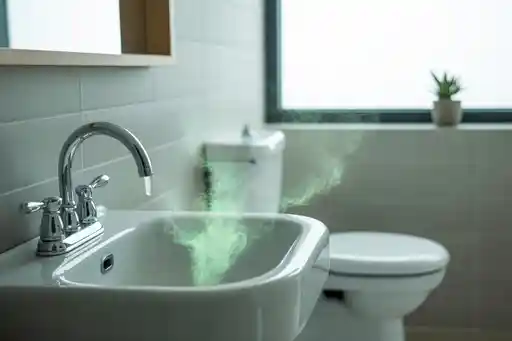
Advanced Troubleshooting for Persistent Odors
If basic solutions don’t resolve your bathroom sewage smell, consider these additional factors:
Biofilm Buildup
Even with regular cleaning, biofilm—a slimy layer of bacteria—can develop in pipes and drains. This film produces its own unpleasant odors and can trap debris.
Solution: Use enzyme-based drain cleaners monthly to break down biofilm naturally. These products are safer for your pipes and the environment than harsh chemicals.
Main Sewer Line Issues
Sometimes, the problem extends beyond your bathroom to the main sewer line. Tree root intrusion, pipe damage, or municipal sewer problems can cause backup issues affecting multiple drains.
Signs of main line problems:
- Multiple drains backing up simultaneously
- Sewage smell throughout the house
- Wet spots in your yard
- Unusually lush grass patches over sewer lines
Solution: Main sewer line issues require professional attention. A plumber can perform video inspection to identify problems and recommend appropriate repairs.
Prevention: Keeping Your Bathroom Fresh
Regular Maintenance Schedule
Establish a monthly routine:
- Run water in all fixtures for 30 seconds
- Check and clean drain covers
- Inspect caulk around fixtures
- Pour enzyme cleaner down drains
Proper Ventilation
Ensure your bathroom fan works effectively and use it during and after showers. Good ventilation prevents moisture buildup that can contribute to odor problems.
Smart Water Usage
In rarely used bathrooms, run water periodically to prevent P-trap evaporation. Consider installing deeper P-traps in problem areas for longer-lasting water seals.
Professional Inspections
Schedule annual plumbing inspections to catch potential issues before they become major problems. A professional can identify worn components and recommend preventive maintenance.
When to Call a Professional
While many sewage smell issues can be resolved with DIY solutions, certain situations require professional expertise:
- Persistent odors after trying multiple solutions
- Multiple fixtures affected simultaneously
- Signs of main sewer line problems
- Structural damage around plumbing fixtures
- Safety concerns about gas exposure
Professional plumbers have specialized tools like video cameras, gas detectors, and professional-grade equipment to diagnose and fix complex plumbing issues safely and effectively.
If you need bathroom renovation or quick-fix services in Austin, our team at Austin Bathroom Remodels is here to provide fast, reliable, and high-quality solutions tailored to your needs.
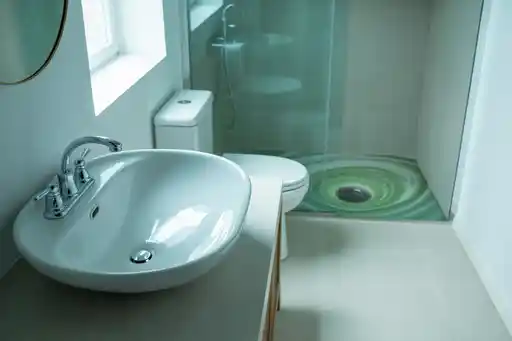
Conclusion: Taking Action for a Fresh Bathroom
A bathroom that smells like sewage is more than just an inconvenience—it’s a sign that your plumbing system needs attention. By understanding the common causes and implementing the solutions we’ve discussed, you can eliminate most sewage odors and prevent them from returning.
Start with simple fixes like refilling P-traps and cleaning drains before moving on to more complex solutions. Remember that preventive maintenance is your best defense against recurring odor problems.
Don’t let a sewage smell in your bathroom compromise your comfort and health. Take action today by implementing these solutions, and establish a regular maintenance routine to keep your bathroom fresh. If DIY solutions don’t resolve the issue or if you’re dealing with complex plumbing problems, don’t hesitate to contact a qualified plumber. Professional expertise can save you time, money, and ensure your plumbing system functions safely and efficiently for years to come.
